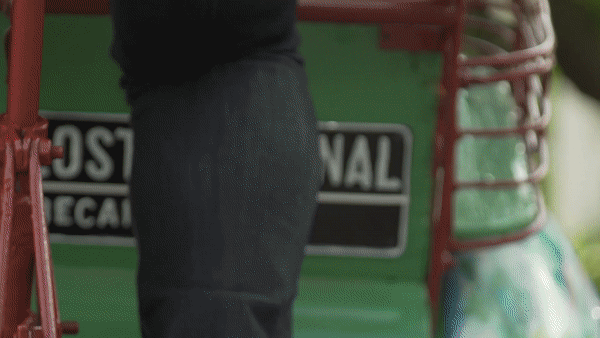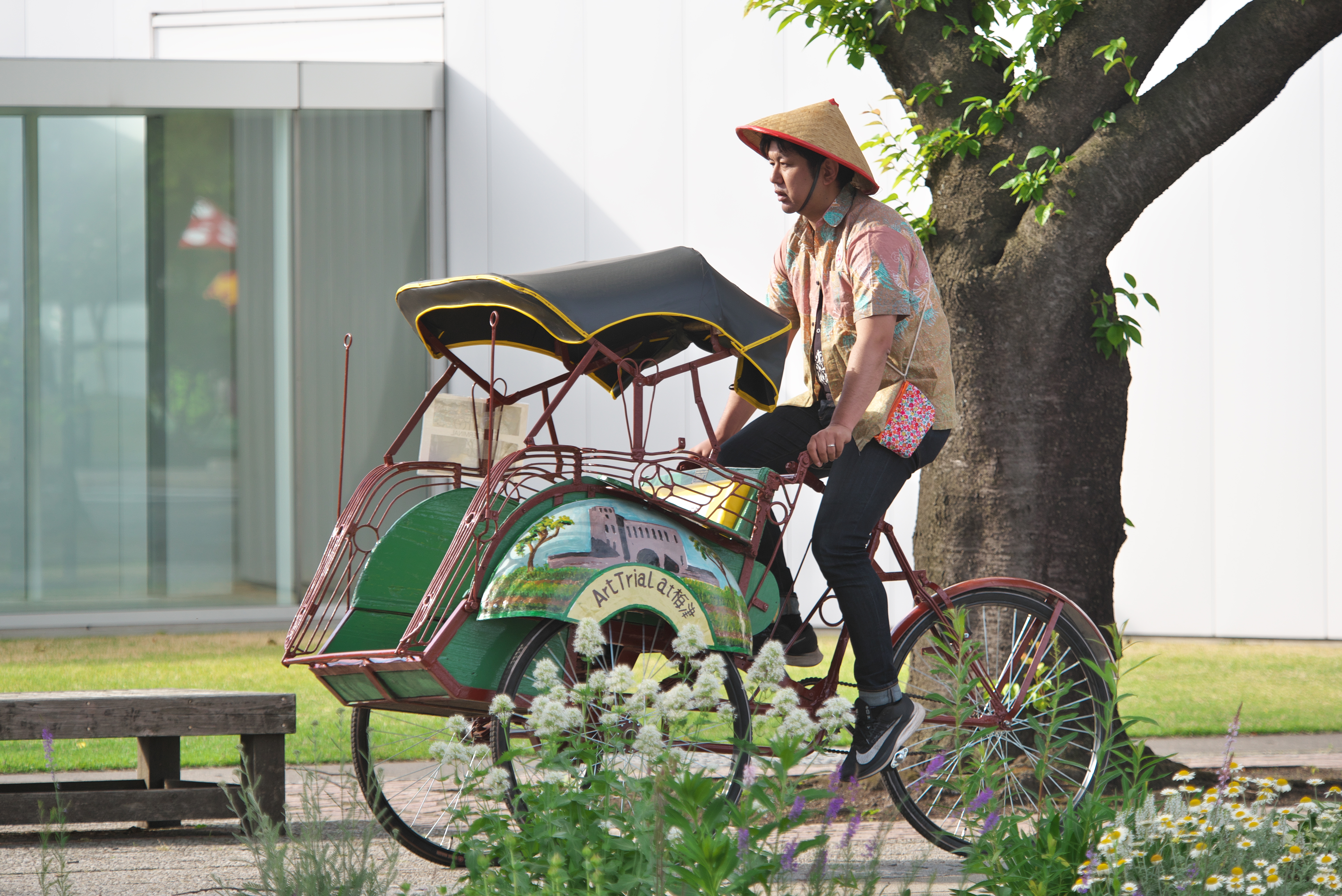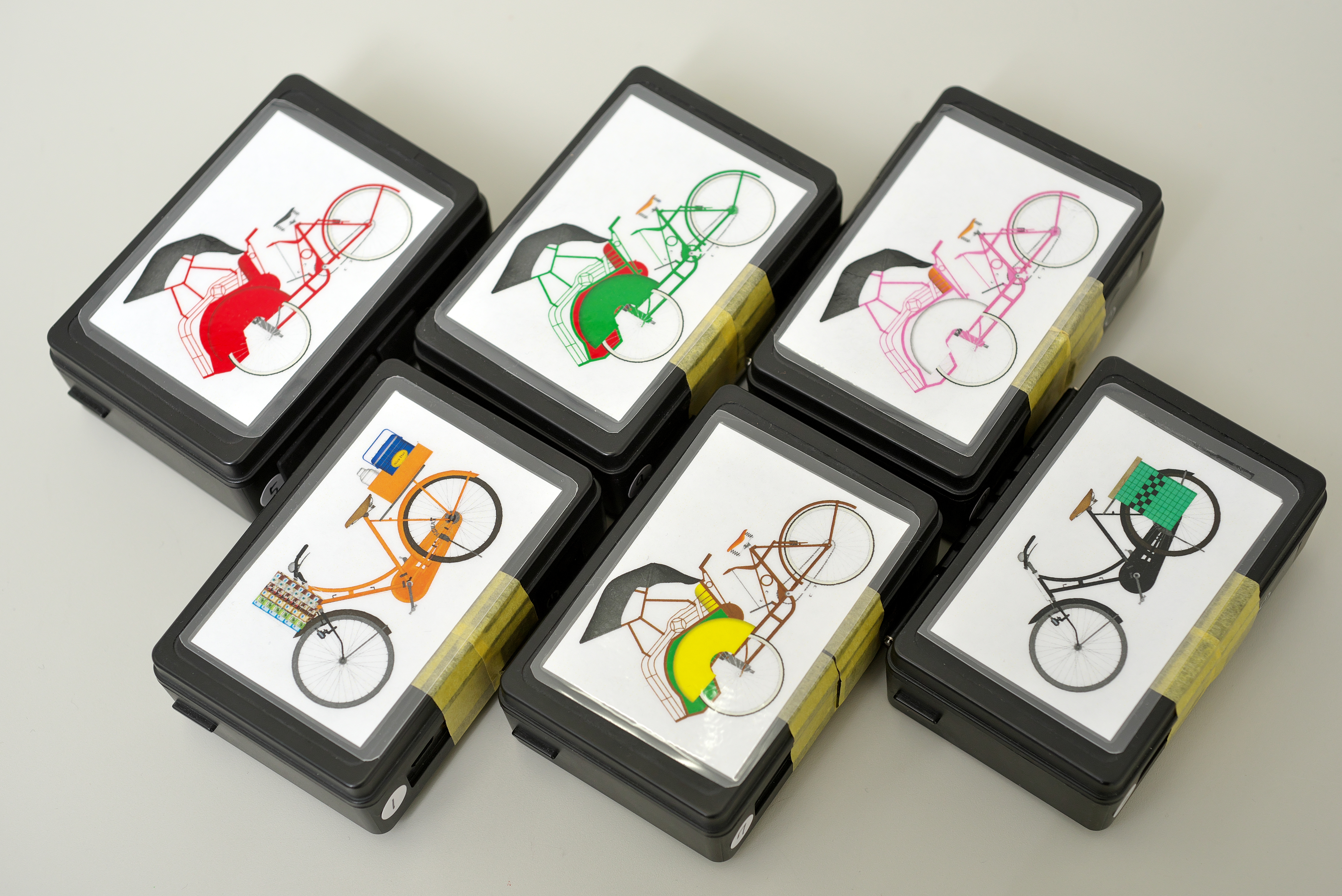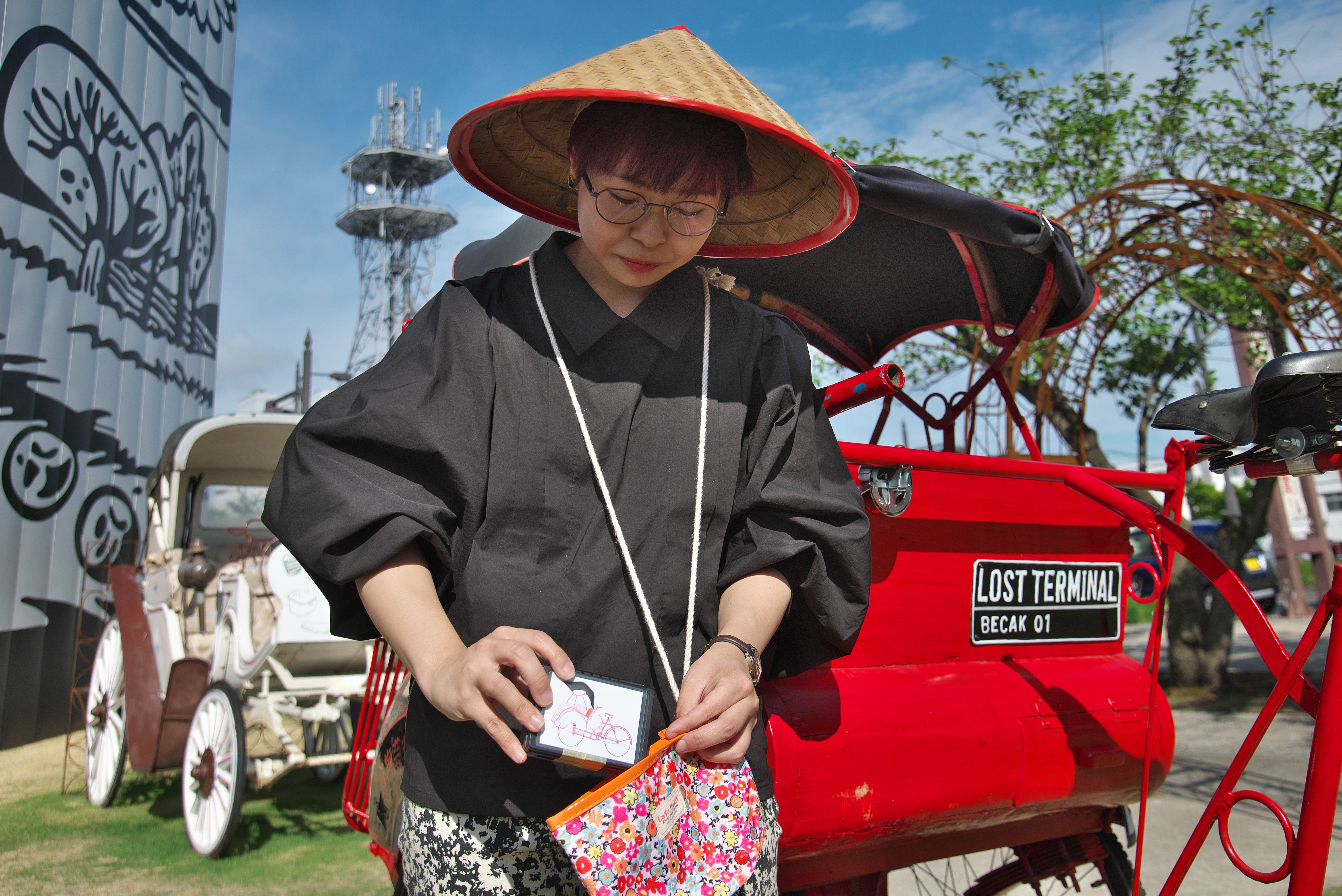
ART AND TECHNOLOGY
Pedal-powered artworks get a digital twist
A museum turns to Azure and Bing Maps so trishaws can take to the streets of a Japanese city
What happens when art breaks free from a museum and hits the streets?
One Japanese city found out when a unique exhibition brought GPS satellite tracking, Azure cloud technology, and Bing Maps, together with a fleet of old trishaws from Indonesia.
Nowadays, cars and motorbikes choke the roads of Southeast Asia’s largest nation. But not that long ago, most people got around on becaks. These pedal-powered three-wheelers have a rider sitting behind and a bench seat up front for two paying passengers (or more if they could squeeze in).
A few becaks still quietly ply the back alleys of quieter neighborhoods and villages. But in Indonesia’s big cities, like the capital Jakarta, this once iconic way of commuting has been banned by authorities as a slow and awkward traffic hazard. Over the years, thousands of becaks have been abandoned or pulled apart.
They have more or less disappeared, not just from the roads but also daily life. That intrigued Indonesian-based Japanese artist Jun Kitazawa who recently recreated the becak experience in Towada City, which sits near the northern tip of Japan’s main island of Honshu.

For several months this year, his installation – entitled “LOST TERMINAL” – gave the patrons of the Towada Art Center the chance to ride a set of trishaws. Each had been mechanically restored and adorned with brightly colored advertisements, characters, and illustrations by Indonesian artisans.
By putting Indonesian becaks on Towada City’s streets, “we shook up what people considered ordinary,” said Yuki Miyata, the center’s Community Education and Outreach Manager.
Assistant Curator Mari Satomura said the center often displays “artworks inside and outside the museum so that visitors can experience and appreciate art in both an indoor space and the outside environment.”

To get the becaks on the streets, the curators had to overcome some challenges. While they wanted its visitors to enjoy the freedom of riding around safely, they also had to follow city regulations.
“We worked with the local government and police,” said Satomura.”This resulted in the idea of monitoring the locations of the vehicles with a GPS solution.”
The museum chose Nissho Electronics to make it happen.
“Our IoT solution enables you to easily grasp and manage location data on the web. We simply attach a palm-sized GPS tracker to an object,” explains Yutaka Kubota of Nissho Electronics’ Field Marketing Department. “Each GPS tracker uses a pre-configured SIM card and sends location data. The system processes and analyzes that data in the cloud, and location information displays on the map in our app. You can also perform searches. So it’s easy to find out what is where.”
Nissho Electronics took only ten days to tailor a solution for the art center. The company hosted it on Microsoft Azure because of its IoT-friendly features – such as Azure IoT Hub, data-processing capabilities, and its ability to easily scale.
When the LOST TERMINAL exhibition opened, GPS trackers in cloth pouches were handed to everyone who borrowed a becak.
Microsoft Azure IoT Hub collected the transmitted data. Azure Stream Analytics and Azure Cosmos DB performed analysis. And the location of each trishaw could be displayed on Bing Maps on a screen in the museum.

“People who borrowed the vehicles said they felt safer because the museum knew where they were at any given time,” Satomura said.
This meant they could experience art in a whole new way, said Miyata.
“It felt like the artwork itself was split off from the museum with the people involved. That’s the nature of art: It attaches itself to people and permeates in different places.
“Projects like this are not limited to Towada City. They can be developed across Japan and around the world. Technologies such as GPS-based IoT will play an important role in expanding the possibilities of art. Efforts to transform entire cities into art museums will continue to grow with the fusion of art and IT.”













